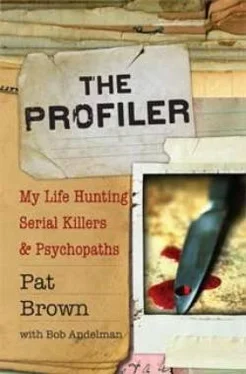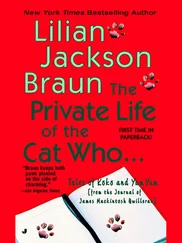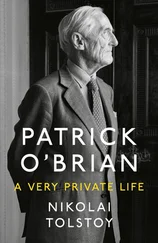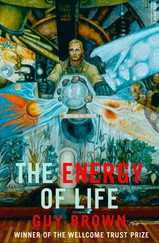I heard through the police grapevine that there was also supposed to be some blond hair at the scene. The boy had blond hair. And, more important, his DNA was there, and he had scratches in his genital area from the briar bushes.
I thought, Well, that’s pretty good. I don’t know if I could argue that one. There’s DNA, and there’s hair, and scratches. DNA is solid proof. His hair on her, if there was a root still attached, could provide mtDNA for analysis, not as absolute as DNA, but pretty useful as supportive evidence if the mtDNA matched his. And how would he get scratches in the genital area unless he had his pants off and he was raping somebody? If the rumors were true and the evidence existed, he must be the guy.
* * * *
MEANWHILE, KIM TOLD me that Walt was let go from his job.
Right after he left, the company received a series of unusual bomb threats. Kim said that the man sounded just like Walt.
But as suddenly as the calls started, they stopped, and Walt dropped from sight. Kim never saw him again.
I WOULD HAVE left this whole miserable episode behind me if something hadn’t kept nagging at me. The police never actually stated that Michael Potter killed Anne Kelley, and nothing was ever written up in the newspaper about the case being closed. In theory, it could have been administratively closed because the suspect was dead, but with all that supposed evidence I would think they would let the community know that there was no longer a killer out there. This lack of clarification on the part of law enforcement irked me. Was the case closed or wasn’t it? Did they have positive proof that Potter was the killer or were they only guessing it could be him and no one was challenging their assumption?
I decided to talk to the Potter family. When I told Michael’s parents that I thought their son might be innocent of the murder of Anne Kelley, they welcomed me into their home.
The story they told me was really sad. They were grieving over their son’s suicide, and then five months later the police showed up and insinuated that he killed Anne Kelley. The family was stunned. Why would they accuse their son of doing that? It’s bad enough that a child committed suicide, but then to be told that he sexually assaulted and murderered a woman was another thing altogether.
They said he was always a sweet kid, that they didn’t see any violence in him. Michael wasn’t perfect; he had dropped out of school, and he did have a problem with his girlfriend. He was depressed. He felt like a failure. They believed that was why he killed himself. They couldn’t believe he had anything to do with Anne’s death.
I asked if I could see the autopsy report, and they gave it to me.
There was nothing in the autopsy about any briar marks or scratches anywhere on that boy’s body. The medical examiner should have noted such abrasions if he saw that trauma, however minor. Instead, outside of the damage caused by the actual shotgun blast, the rest of the body was “unremarkable.”
Then I wondered about the rest of what I had heard-whether there was actually blond hair and DNA found that matched Michael.
It turned out that neither existed. That’s why the police couldn’t announce that Michael Potter murdered Anne Kelley. They didn’t have any physical evidence connecting him to the crime, only that he conveniently committed suicide five days later.
I called Anne Kelley’s father, and he said that the police told him that Michael Potter killed his daughter and he was told about the scratches and the matching DNA and hair.
He chose to believe the police, and in his mind, there was nothing more to discuss. He didn’t want to hear anything about it from me or anyone else. He said his wife was satisfied hearing that Michael Potter killed their daughter. She accepted it because believing it gave her closure.
“I don’t want you to ever contact my family again, and if you do, I’ll sue you,” he told me.
And that was the last time I spoke to the Kelley family.
I understood if the police couldn’t develop evidence that Walt was the killer. They had to have evidence; without that, they couldn’t charge him with a crime. Although I thought that the police mishandled the case, I wouldn’t want them to arrest someone without probable cause. That would be another miscarriage of justice.
I could even live with the fact that they thought Michael Potter had something to do with it, if enough of the evidence supported such a conclusion.
But when they pinned the crime on him and told the grieving families of both Michael Potter and Anne Kelley, that crossed the line for me. That, to me, was inexcusable.
Why wouldn’t they do their job? Why didn’t they just bring Walt in and interview him? Why didn’t they take a DNA sample from him? And if they still couldn’t bring a case and an alleged perpetrator to court, then at least they would have tried.
In my opinion, if anyone stopped to compare the evidence supporting Walt Williams’s possible involvement in the murder and the evidence supporting Michael Potter’s, they would have a few short lines on Potter’s side of the paper and a whole lot of lines on Williams’s side. But for some reason-for some yet unclear reason-I believed the police department simply ignored the better suspect.
People ask, is there a perfect crime? I say, no, there isn’t, but there are plenty of “good enough” crimes. They’re good enough because nobody saw anything, they’re good enough because the body was in water and the evidence got washed away, or they’re good enough because the body wasn’t found for three or four weeks until the dog walker tripped over it and there it was. They’re good enough if the police had a “damn good” suspect but still looked the other way.
Because there are so many good enough crimes, a substantial portion of crimes will never be prosecuted because the evidence won’t be there.
Citizens should have cared more about an innocent girl being slaughtered in their town; they should have protested when they never got an answer as to who killed her. But no one spoke up except me. And when I did, I was told to forget about it. If a woman is murdered in the woods and nobody speaks up, does this mean the victim and the homicide don’t really matter? The system did not function properly. We should all care more about our fellow man and about doing what’s right. That’s what spurred me on the path of becoming a professional criminal profiler.
I DECIDED TO educate myself about psychopaths, serial killers, and serial homicide investigation. I spent the next four years at the “Pat Brown School of Criminal Profiling,” which held study sessions in patients’ hospital rooms, doctors’ waiting rooms, and emergency rooms.
I wanted to know more about the field of profiling and serial homicide investigation. I wanted to learn about forensics and psychopathy. I wanted to learn how to analyze, dissect, and reconstruct a crime.
The first thing I did was look for a college-level program. I had a liberal arts degree, which was heavy in anthropology, sociology, and psychology. Those fields were surprisingly useful because I had studied how people behave in society-in the United States and in other countries. I studied how people behave in subcultures, how men and women deal with each other, and their roles within their communities. I learned about deviant behavior and why people commit criminal acts.
But I didn’t have any formal education in criminal profiling or in criminal behavior, crime reconstruction, and forensics, the three fields that are the foundation of criminal profiling. The University of Maryland, near where I lived, offered a criminal justice program, but nothing really useful for profiling. In fact, there was nothing in the entire United States for those not in law enforcement that was focused on criminal profiling. I found a forensics program at George Washington University, but it was pretty much a lab program. The course really wasn’t geared toward criminal profiling, and I wasn’t interested in getting a job as a technician.
Читать дальше












